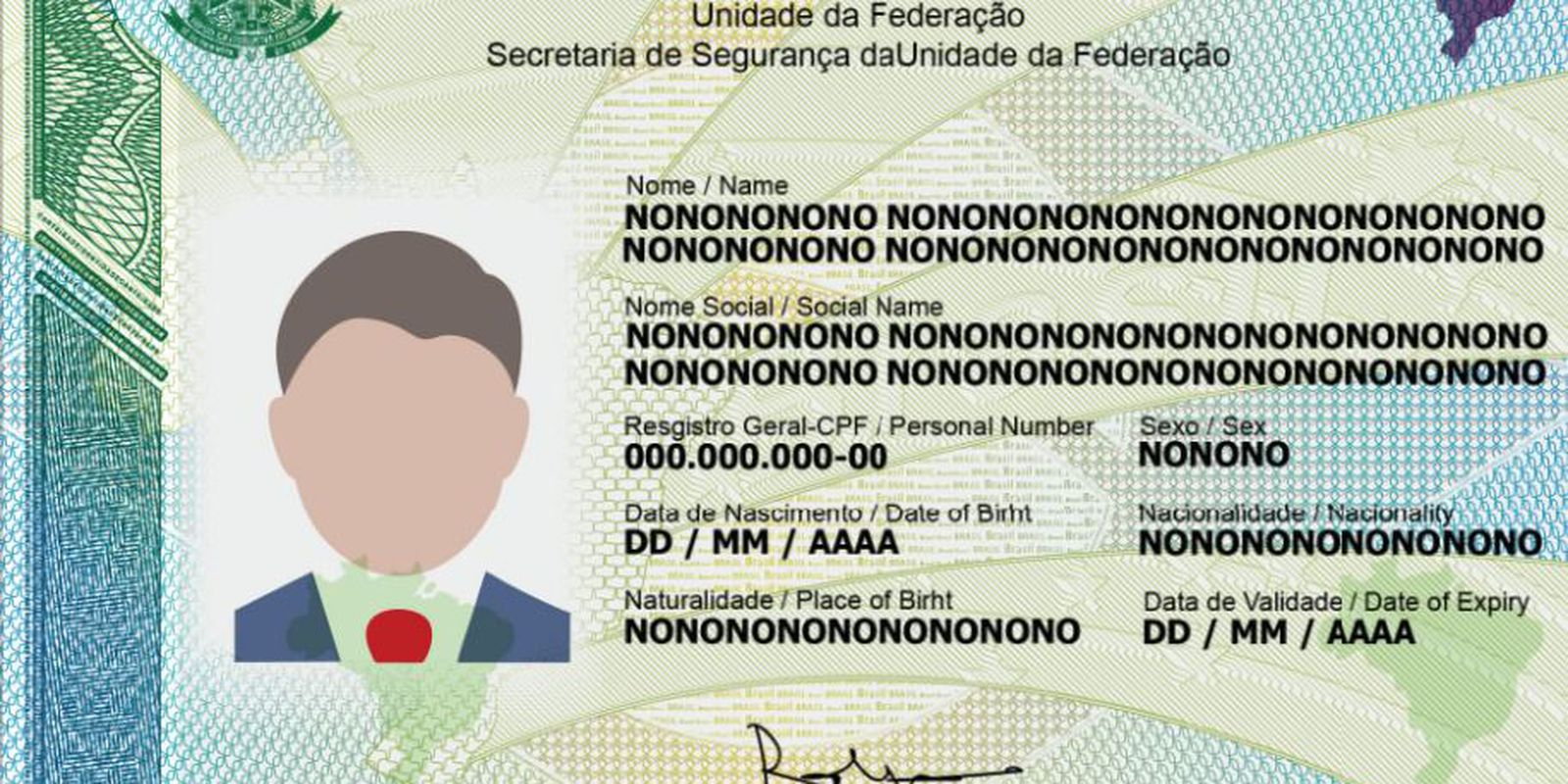The Federal Executive Chamber of Citizen Identification (Cefic) published, on Thursday (17), the rules for filling out and printing the new National Identity Card (CIN). The rules are outlined in a resolution passed on September 29.
According to the regulation, the document must contain the name of the issuing state and the respective Secretariat of Public Security or identification service. The CIN must also contain the name of the citizen and social name, if any, in addition to data such as CPF, gender, date of birth, nationality, place of birth and expiration date.
According to the norm, the CIN must also register the holder’s signature (optional in case of illiteracy, disability or momentary loss of function), mother’s name, father’s name, issuing agency, place, issue. The State Code must be below the QR Code and aims to define the identification point for CIN logistics purposes.
The rules established for the Card follow the International Civil Aviation Organization (ICAO), which establishes international standards for issuing documents.
The new identity nationally unifies the CPF number as a general identification record. The document comes with a QR Code that can be read by any appropriate device, such as a smartphone – which will allow electronic validation of its authenticity, as well as knowing if it was stolen or lost.
This new version of the identification document will also serve as a travel document, due to the inclusion of an international standard code called MRZ, the same used in passports.
So far, however, Brazil only has agreements for the use of identity documents at immigration posts with Mercosur countries. For other countries, the passport remains mandatory.
The new RG will be valid for 10 years for people up to 60 years old. For those over 60 years of age, the old RG will continue to be valid indefinitely.

















